16 Types of Basil to Splash Some Color in Your Herb Garden
Author: Jen Worst | Editor: Omar Alonso
Review & Research: Jen Worst & Chris Miller
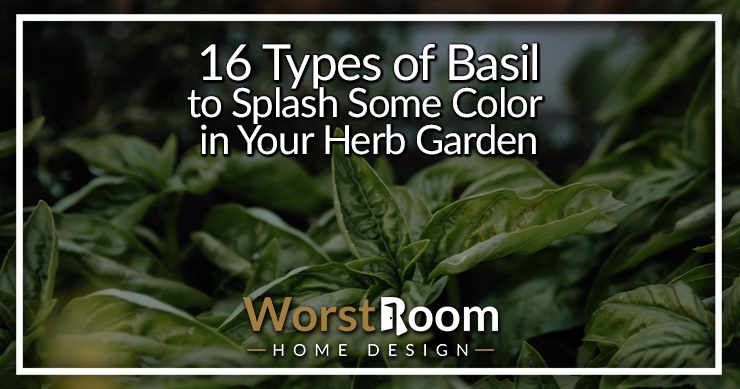
When we're talking about culinary herbs, the first that often comes to mind is one of the types of basil. Although it originated from the Indian subcontinent, basil has taken its place in Asian and different European cuisines.
This kitchen herb belongs to the mint family, and there are many different types of basil, each with different flavor profiles.
Sweet and Genovese basil are the most common basil available in the world, but there are many more species. They’re a great option if you grow a single type of herb in your garden.
There are different basil types with varying sizes of plants, flavors, and usages. Let’s get to the main varieties of basil.
16 Types of Basil
We’ve done extensive research on all the types of basil and have come up with a list of the most common and popular basil varieties in the world. Time for you to give them a go (and then check out our guide on how to grow basil)!
Before we start, some context for you is that basil is known as the "king of herbs". The Greek word basileus means "king" and basilikon means "royal". The word basil relates to the Latin word basilisk, which is a reptile beast that could end you just by looking at you. And the Roman story says that basil is the antidote to the basilisk's venom. Pretty cool origin story!
Sweet Basil
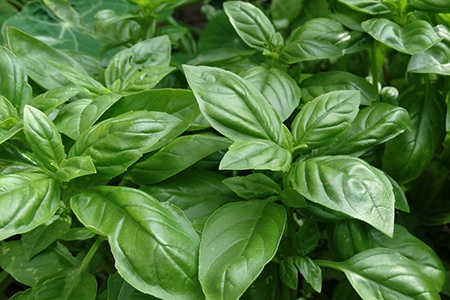
If your local store has only one kind of basil, we can already tell that’s the Sweet Basil. This species is by far the most widespread basil in the world, and rightfully so.
Be it salads, marinades, or pestos - sweet basil is a must in all these dishes. But that’s not all; sweet basil plants are widely recognized as natural mosquito repellants.
These plants can grow up to 12-18 inches tall and doesn’t take more than 3-4 week to harvest properly.
Anyone who cooks regularly has seen Sweet Basil already, but for those who didn’t - it’s a medium green colored plant with round, cup-shaped leaves. It grows well in summer.
Thai Sweet Basil
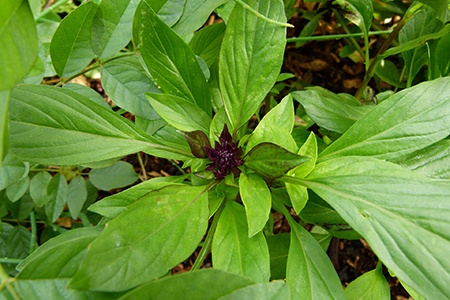
Don’t be confused by the name; this basil isn’t sweet; instead, it gives you a spicy, licorice flavor. Mostly used in spicy noodles and Thai basil chicken, this basil is known for keeping its flavor even at a high cooking temperature.
A typical Thai sweet basil, Siam Queen, can grow up to 2 feet tall and takes only 60 days to harvest fully. These types of basil are great for the impatient.
These kinds of basil isn’t just a good cooking herb; it gives your herb garden a beautiful look as well. Thai Basil has dark purple flower heads and dark pointed deep green leaves. The dark purple-dark green color contrast adds to the beauty of your herb garden.
Genovese Basil
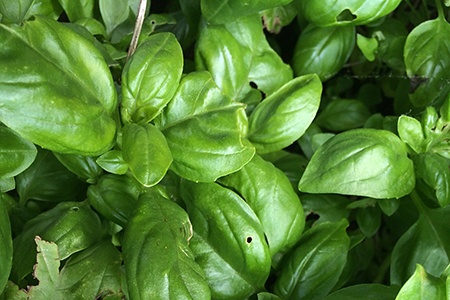
You might have guessed it from the name - Genovese is basil that’s originated from Italy. It’s what you call the ‘classic Italian basil,’ widely used in Italian dishes and pestos.
Genovese has similarities to the Sweet Basil, but it has a much more intense and aromatic flavor.
The leaves of this basil are relatively flat and have a pointed shape. They’re generally extra-large and dark green.
Purple Basil
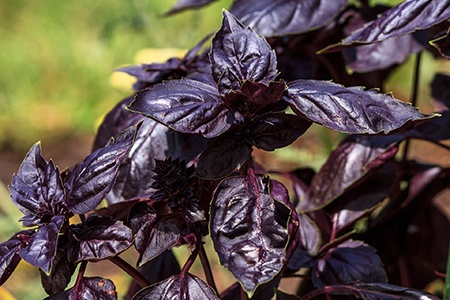
Another basil to make your herb garden look stunning - Purple Basil comes with dark burgundy color leaves with a touch of green. It’s not sweet like the typical basil varieties, but it adds a more clove-like taste to the dishes.
Purple basil are mainly used to add color to different dishes by steeping them in vinegar or oil.
This aromatic herb plant can grow up to 18 inches in height.
Once you plant them in groups, you’ll see some fully green leaves alongside the usual burgundy ones - thereby making a beautiful color combination. Planting them in an herb spiral in the garden is always a great choice.
The leaves are quite large, around 1.5 inches in width when fully grown. It takes approximately 80 days to grow these types of basil properly.
Lemon Basil
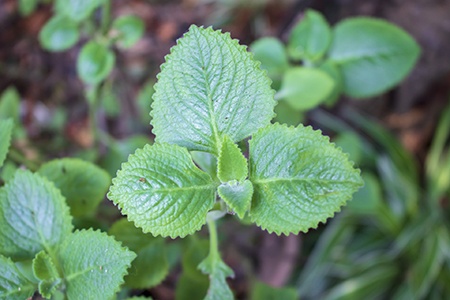
Yes, there are basil that smell like lemon and give your dish a tangy lemon flavor when used. It’s slowly becoming one of the most popular basil varieties as more and more gardens and nurseries are planting them.
The plant can grow from 12-18 inches and have light green leaves. Lemon basil are generally used to marinate fish or poultry, but they’re also a common ingredient in desserts, teas, and grilled vegetables.
Some people prefer to crush the leaves and take the lemony scent - apparently, the smell also helps reduce motion sickness.
Lime Basil
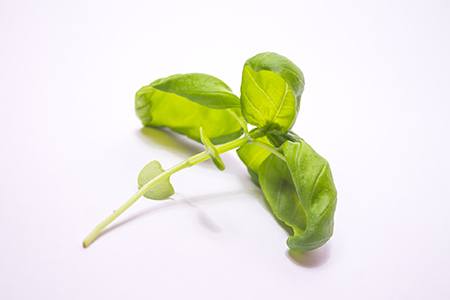
When there’s lemon, there must be lime, no? This here’s another of the basil types that gives you a mild and sweet citrus flavor.
Lemon and Lime aren’t technically yin and yang, but together they enhance the flavor of your dishes and takes them to a new level. That is why many gardeners tend to grow both of them together.
Lime basil has bright green and narrow-shaped leaves. They can grow from 16-24 inches in height. Lime basil are a familiar feat in different desserts, teas, and sauces.
If you’re a fan of the lemon-lime flavors, you can actually go for the lemon-lime microgreen basil - they grow up fast and gives your dish both the flavors.
Green Ruffles Basil
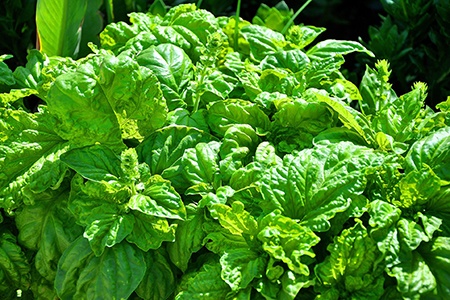
Here’s another basil that is related to the sweet basil species but has significant differences. This one has curled leaves, so decorating your herb garden should be easy with this one.
Green Ruffles types of basil have a mild and delicate flavor, making them a good pick for different pasta sauces and dishes and of course salads.
The plant of this basil can grow as long as 24 inches, and they have relatively bigger leaves with a 4–6-inch width. Green Ruffles basil generally takes 70 days to harvest fully.
Lettuce Basil
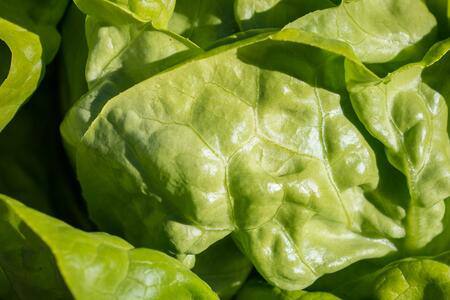
It’s in the name - Lettuce Basil are indeed a standard item in salads and similar dishes. This particular type of basil has four-inch-wide and six-ten inches long leaves.
While other basil look much smaller than this one, it’s pretty resourceful to make lettuce wraps. It generally has a mild flavor, contrary to its massive size.
Lettuce leaf basil is originated in Italy, and it lasts longer than most other basil species. The leaves are enormous, but overall, the plant is relatively compact, growing only a foot high at max. It’s somewhat slower to flower as well.
Holy Basil
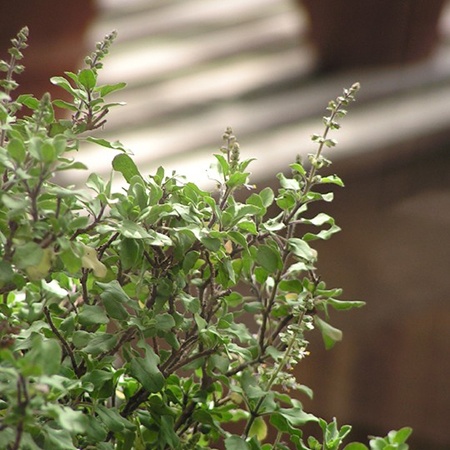
If you’ve been to India and tasted the famous meat curries - you’ve probably had the taste of Holy Basil already. It’s a fragrant herb with a sweet and spicy musky scent.
It’s also known as Tulsi in the South Asian regions and is widely used as a medicinal herb. These different kinds of basil are often eaten raw there to act like a cough drop.
This plant is sacred in Hinduism, hence the name Holy Basil. Tulsi means incomparable one, and in many aspects, it is the most efficient of basil in our list.
From stomach ailments to kidney welfare to promoting blood circulation - Holy Basil does it all. You can use it on tea or grind it on mortar and have the extract with honey.
Cinnamon Basil
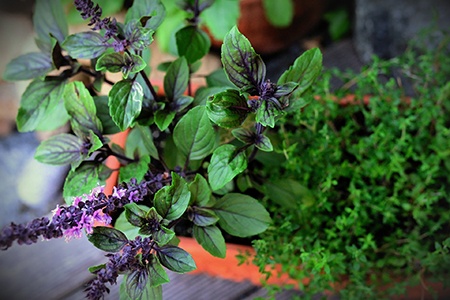
Cinnamon among the very popular types of spices in different cuisines, and Cinnamon Basil is also a popular herb in Asian cuisine.
It’s one of the most beautiful and different types of basil on our list with its reddish-purple stems and pink flowers. Cinnamon Basil brings a spicy, fragrant flavor to the dish. It’s pretty mild, though.
This basil pairs well with fruits with a zing, like an apple. It’s widely used in fried rice, grilled vegetables, salads, and chicken marinades.
Some of the top dishes with Cinnamon Basil include Cinnamon Basil Chutney that can be used as a sauce to eat with baked chicken, apple pie, or baked brie.
Cardinal Basil
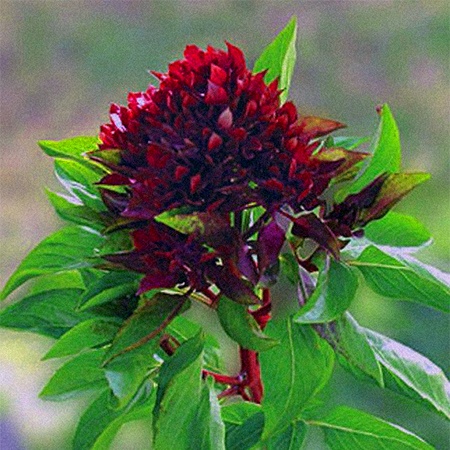
At first look, it won’t even seem like basil, instead an ornamental plant to enhance the beauty of whatever types of gardens you're maintaining.
But truth be told, its spicy scent is strong enough to be added in different dishes as a flavor for vinegar and oil. Cardinal Basil has tightly clustered blooms and can grow up to 2.5 feet tall at max.
African Blue Basil
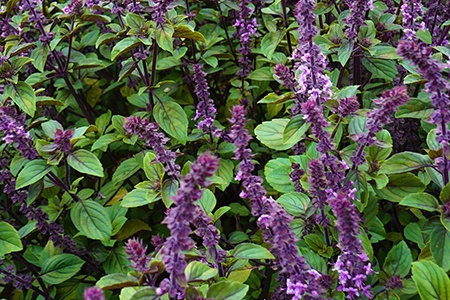
We now have one of the tallest types of basil plants on our list. It can grow up to a whopping 4 feet tall and has excellent floral arrangements.
This basil is commonly used in rice, meat, and vegetable dishes because of its mixed spice flavor. Pepper, cloves, camphor, and mint flavors are found in their leaves.
African Blue Basil is relatively easy to grow; all you have to do is make sure they don’t freeze.
Greek Basil
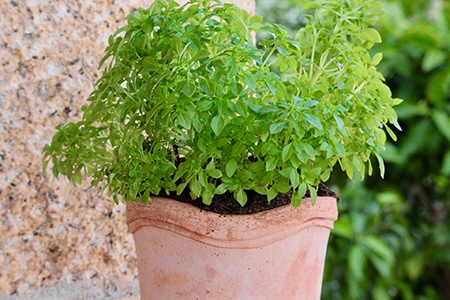
After the tallest, we now have one of the smallest basil plants in the world. This basil can grow up to only 8 inches and is a common item in a salad, soup, and meat dishes.
In fact, they’re a common ingredient in the famous Greek-style salad recipe. The leaves of the Greek Basil types are pointed and small. They make great types of garnish, too, if cooked properly.
Summerlong Basil
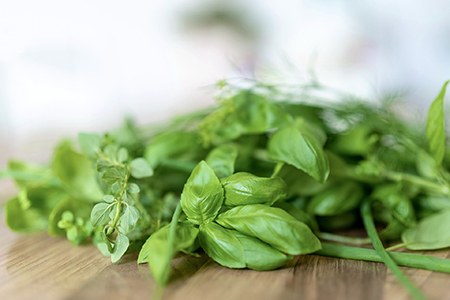
Here is another compact, tight dwarf varieties of basil that’s good for container herb gardens. This basil matures much earlier than others, within 30-60 days. Developed by Burpee Gardens, this basil will last much longer in the summer as it’s slow to bolt.
If you don’t have enough space in your garden, you can easily add this dwarf basil there. It’s pretty similar to sweet basil in taste, so that it can be used as an alternative in pestos and marinades.
Spicy Globe Basil
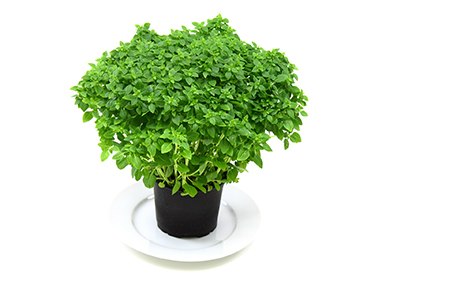
One thing is sure about basil - the names don’t lie. As the name suggests, Spicy Globe Basil indeed has a strong, spicy flavor and is usually served as a whole in salads, pasta dishes, and soups. This is a dwarf variety of basil and also known as Spicy Bush and Boxwood Basil.
The plant forms a tight clump while growing. It has relatively smaller leaves and is an excellent pick for container herb gardens and indoor gardens.
Other Types of Basil
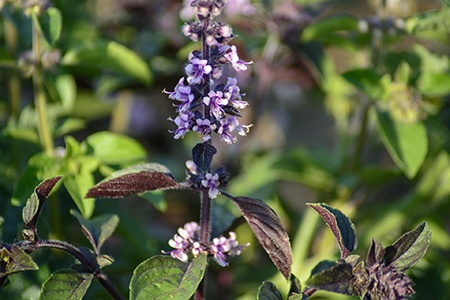
There are, of course, various types of basil plants that aren't as well known, readily available, or useful to us that could still be mentioned. These include Napoletano basil which is sweet but spicy to a degree.
Dark Opal basil is great in a flower arrangement or in your flower bed, but not for flavoring. A similar type is Purple Ruffles basil. Others include Christmas basil and Ararat basil.
Types of Basil for Every Dish & Every Garden
It isn’t easy to pick one or two basil from the wide range of basil. Each of them has its own flavor, so we’d suggest you choose the ones that go with your cooking style.
A bit of advice - experiment as much as you can with these aromatic herbs. We hope our list of the common types of basil was of help to you.



